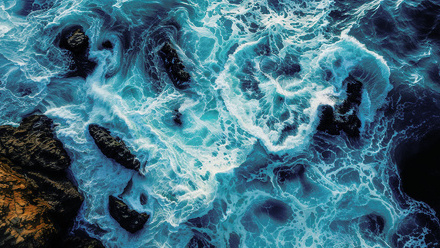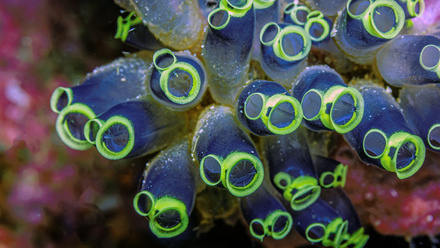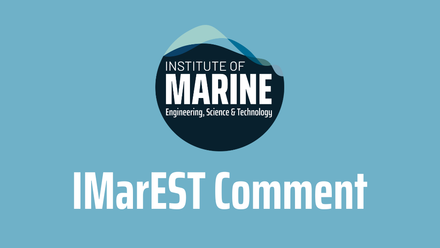Connecting rivers, land and ocean on a bike
Cycling the Rhine River, IMarEST member Hannah Muir discovered many people ‘doing great work’ to improve water health.
When Hannah Muir, then a PhD student at the National Oceanography Centre in Southampton, was awarded the IMarEST David Henderson Inspiring Journey Grant in 2024, she ventured inland, to the source of the Rhine River in the Swiss Alps, for the start of an epic 1,400km bike ride through some of the most industrialised parts of Europe.
The Rhine is one of Europe’s major rivers, flowing more than 1,200km from the Swiss Alps to the North Sea. On its way, it passes through six countries and connects a further three by tributaries, which adds up to a water catchment of 200,000km2 and more than 60 million inhabitants.
The Rhine has connected societies for centuries, but it is a much-changed waterway today, with the demands of industrialisation, hydropower and agriculture drastically altering the natural river course. Natural habitats have been lost, chemical pollution and urban waste, including microplastics, have contaminated water quality and biodiversity has drastically declined. The Rhine of today is very different to the river our ancestors would have relied on for water, food and recreation.
Can what has been lost ever be restored? As part of her journey, Muir met with those working to reclaim and restore the river and its catchment, from an organic winemaker to local people collecting litter from the riverbank.
“There are a lot of people doing great work to improve the river, which is a real cause for optimism,” she states. “Most people think about their region and their river catchment, but less about the river and the ocean as a connected system.”
Migratory fish and river health
The connection between sea and river is perhaps most starkly demonstrated by the migratory fish that inhabit both ecosystems. At 440km into her cycle ride, Muir met with Dr. Ruedi Boesiger who leads River Restoration & Conservation for the World Wide Fund for Nature (WWF) in Switzerland, and heads up the Salmon Comeback Project, which is seeking to bring salmon back into the Rhine all the way up to the city of Basel, where they once spawned. This work is good for the fish, for the river and its users, and for the ocean, because it means that the water and sediment that reaches the ocean will be of higher quality.
There are two big issues facing the salmon, according to Dr Boesiger: the hydropower dams, which alter the natural river flow and are a physical barrier to salmon and other fish species trying to travel upstream and downstream, and the straightened river channels that have drastically altered the river flow and sediment deposition, wiping out suitable habitats for fish spawning. Addressing this means collaborating with a wide range of stakeholders, including hydropower companies, farmers, policy makers and other NGOs. It is this holistic thinking that is difficult to achieve.
“It's clear that there is coordinated action across the Rhine River to improve things like water quality and river health, which is really positive,” Muir explains. “But there’s still a siloed mindset between river management and marine management, which I’m hopeful will be improved upon in the coming years.”
Having just started a new job as an Applied Scientist at the National Oceanography Centre, Muir says her journey was bittersweet at points, witnessing how the heavy industrialisation has irrevocably changed this iconic river. But even so, she came away from her long bike ride hopeful that positive change is underway.
“When it comes to our rivers, it's unlikely that they'll ever return to how they were before human development, but we can move forward in a more conscious way, for example, by putting in meanders to recreate more natural river flow and restoring vegetation,” she says, highlighting her meeting with Dr. David Eschbach, Project Manager of Alluvial Functionality at the Rohrschollen Island Nature Reserve in Strasbourg, 570km into her journey.
His work seeks to improve the river’s hydromorphological (the physical character and content of water bodies) processes by using maps of the old river before it was straightened to reconstruct the site to simulate its natural flooding processes that give nature space. This improves water quality and supports vegetation and habitats so life can thrive, and less pollution reaches the ocean.
“It also creates a cooling function for the city, providing natural climate change adaptation,” Muir points out.
Having contributed a series of short films and blogposts to showcase the inspiring people she met along her epic bike trip, Muir is now encouraging other marine professionals to apply for the David Henderson Inspiring Journey Grant. The deadline for initial proposals is 31 August 2025.
Tell us what you think about this article by joining the discussion on IMarEST Connect.
Main image: Hannah Muir cycles against the backdrop of the Alps. Credit: Hannah Muir.
Inline image: the Rhine in Switzerland. Credit: Hannah Muir.






